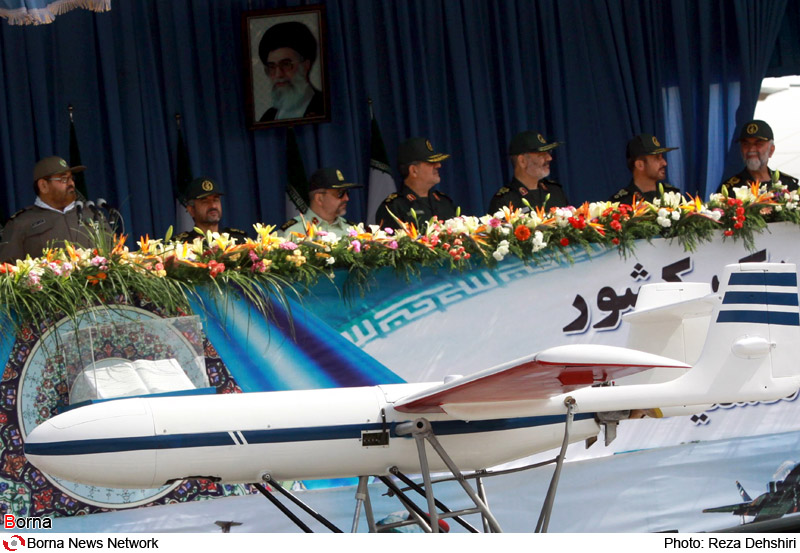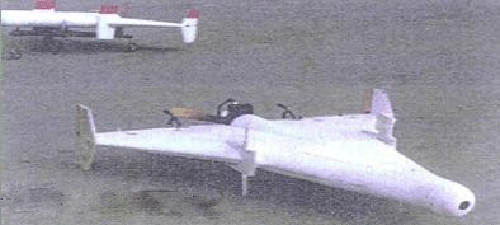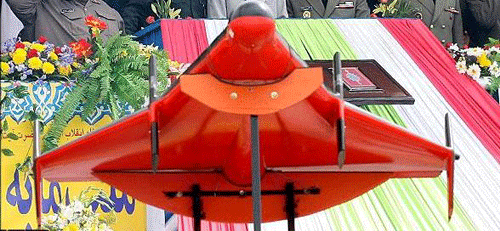Saeqeh Family :
Saeqeh is a delta wing narrow pointed fuselage target drone. Control surfaces are located on the horizontal stabilizers. The drone uses a pusher-configuration engine which generates a power of 25hp which makes it able to endure for 45 minutes .
Saeqeh is one of the fastest UAVs in Iran and that's why it's used as targets by Iranian air defense system and artillery equipment . Also its a maneuverable and unstable plane which has come from it's design .
It comes in two versions. The first one which only has radio command guidance system and the other one which has GPS guidance and IR emissions . Both versions are launched via a booster and are recovered by parachute .
Design :
Both variants share the same design featuring narrow, pointed fuselage with a large cropped delta wing and a single tailplane. Like the Ababil, control surfaces are found on horizontal surfaces, but not on the vertical tailplane.
Launch is via RATO or pneumatic launcher and can be recovered via parachute .
Some models carry a static, forward facing camera in the nose, similar to the models carried by the Mohajer-2 and Mohajer-4 . This cannot positively be identified as a unique feature of the Saeqeh-2 versus the Saeqeh-1 .
Variants :
Saeqeh-1 :
The most basic of target drones, the Saeqeh-1 only has basic radio control . Its usually used as a target for non-radar air defense systems .
Speed : 250 km/h
Range : 10 km
Flight altitude : 11000 feet ( 3300 m )
Flight time : 60 min
Saeqeh-2 :
Nearly physically identical to the earlier model, the Saeqeh-2 first flew in 2002 alongside the Mohajer-4 .
In a step-up from basic radio control, the Saeqeh-2 now has GPS guidance. It can also mimic different radar and IR emissions allowing it to serve as a decoy both defensively and offensively for penetrating an enemies air defenses .
This plane is usually used as a flying target for air defense systems like the previous version but more equipped .
Manufacturer : Islamic Republic of Iran
Weight : 60 kg
Length : 2.81 m
Width : 2.60 m
Operational range : 50 km
Flight altitude : 10000 - 12000 feet ( 3000 - 3600 m )
Flight time : 45 - 60 min
Speed : 230 - 250 km/h
Saeqeh UAV
Saeqeh UAV launching
Recovering Saeqeh UAV
To be continued later
































